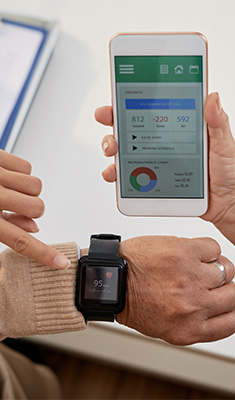

Chelsea Youngquist
Director of Marketing
When a patient walks through your doors and arrives at registration, they may feel overwhelmed and nervous – not to mention dealing with the medical issue that brought them there to begin with. In this emotional state, they might be handed a bunch of repetitive paperwork which they need to complete manually, sometimes in language that is difficult to comprehend. This is the beginning of a poor patient experience.
Registration is a great time to set the right tone with the patient. Explaining the registration process, hospital policies and financial matters, and answering any questions are all things that can be done to reassure the patient and ensure their experience gets off to a strong start.
What steps can you take to ensure your check-in process is patient-centered?
1. Utilize check-in technology
The Medical Group Management Association’s most recent MGMA Stat poll revealed that only 36% of practices utilize check-in technology such as a kiosk or tablet. Those 36% found that utilizing the technology:
Improved accuracy and allowed time to receive the patient rather than just processing information
Helped with collections, leading to an increase in copay collection and a more standardized process
Heightened awareness of patient arrivals and wait times
Utilizing technology in this area improves the intake process by capturing patient information and signatures electronically, not only increasing satisfaction but also staff efficiency.
2. Give patients the check-in option they prefer
Make your pre-registration process one that is convenient and easy by allowing patients to check-in from home for scheduled procedures. Completing documents securely via your web/patient portal contributes to a more positive patient experience while allowing providers to spend less time on manual follow-up and more time on delivering care.
At the facility, give them the option of securely checking in on their own device if they have one, or a provider-owned device if not.
3. Provide electronic status updates
Once your patient has checked in, providing them with status updates (via text message or otherwise) on expected wait times can free them from having to sit in a waiting room. For instance, an orthopedic practice that recently integrated a patient paging solution into its check-in process improved patient satisfaction by 20%, improved staff efficiency, and increased patient privacy and HIPAA compliance.
4. Ensure adequate staffing levels
A personal touch is of utmost importance, especially at registration. Even if you have utilized user-friendly technology, some people will require more assistance and support than others. A friendly and helpful staff member can really set the tone for a great patient experience.
5. Provide patients with facility and other information upon or even prior to arrival
Whenever possible, allow patients a choice in how the give or receive information. In this case, you could send them facility information prior to their stay, especially if they are pre-registering from home.
If they are checking in on-site, consider an admissions packet that can be delivered in hard copy or electronically to their device. This packet might contain wellness information, a schedule of their appointments, a map of the facility, food menus, etc.
Also ensure you have adequate wayfinding signage, as 30% of first-time visitors get confused and lost when visiting the hospital.



